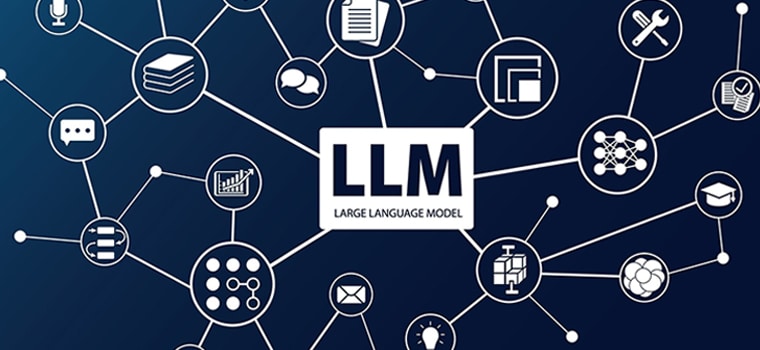Virtual assistants are progressing beyond simple question-and-answer formats to solving complex queries. Today, AI-driven virtual assistants communicate in multiple languages easily, and large language models, or LLMs, power this transformation.
Now you can ask your device for restaurant recommendations in English and get an answer in Spanish. That’s what LLMs have made possible in recent times.
From breaking language barriers to revolutionizing customer service, these models are redefining the way we interact with technology.
In this article, we’ll talk about how LLMs fuel multilingual virtual assistants and make the world a more accessible place.
Role of Large Language Models To Support Multiple Languages
Large Language Models (LLMs) are impressive tools. They can understand and generate text in various languages. But how?
At their core, LLMs train on vast amounts of data. This data comes from diverse sources that span many languages. When an LLM learns, it absorbs patterns, words, and structures from all these languages. This broad training helps it recognize different languages easily.
Here’s a simple way to think about it. Imagine a library. This library has books in English, Spanish, French, and more. A person reading all these books would learn multiple languages. Similarly, an LLM processes massive “libraries” of digital data. This helps it become multilingual.
In practice, you could ask an LLM a question in English. It might respond in German if you want. This flexibility makes LLMs powerful for global applications. They bridge language barriers to make communication smoother for everyone as you train conversational AI using LLMs.
Benefits of Using LLM for Multilingual AI-Driven Virtual Assistants
Effective communication knows no boundaries. Multilingual AI-driven virtual assistants are revolutionizing how we engage with technology. Let’s have a look at the benefits of using Large Language Models for multilingual AI-driven virtual assistants.
Enhanced Customer Support
Multilingual virtual assistants excel at customer support, as users get assistance in their preferred language worldwide. It removes the hassle that language barriers create. These assistants, powered by Natural Language Processing (NLP), ensure clear communication.
Powerful Translation with NLU Model
The NLU model within large language models acts as a robust translation model. Imagine requiring a document translated from English to Korean. Multilingual, intelligent virtual assistants can do this with precision, as they don’t just translate words. They capture the essence to ensure the translated content retains its original meaning.
Auto-Detection Capability in Multilingual VA
One standout feature of the multilingual VA is auto-detection. Users don’t need to specify their language. Start a conversation in French or Hindi; the VA understands. It detects the conversational language instantly. This auto-detection ensures smoother interactions. It’s like having a global citizen ready to chat in any language.
Broadened NLU Language Spectrum
The world of NLU is vast. Multilingual virtual assistants leverage this richness. They handle a wide array of languages. From popular ones like English and Mandarin to less common tongues, every conversation feels natural. The breadth of languages covered means a wider audience can benefit, which creates inclusivity.
Key Considerations for Building a Multilingual VA
Building a multilingual virtual assistant (VA) involves thoughtful planning. Let’s explore the essential aspects:
- Foundation of multilingual VA: Three core elements define a VA’s multilingual ability:
- The language the VA uses to converse with users
- The language set during its training phase
- The mechanism it employs to detect and decide the language for interactions
- New or existing framework: Decide whether you’re starting from scratch or enhancing an existing VA. Both avenues are viable. Each has its own set of procedures and challenges.
- Unique multilingual features: Multilingual VAs possess language-specific components. Their behavior can differ from their monolingual counterparts.
- Translation mechanisms: How will your VA translate languages? Several options exist:
- Utilize established translation services like Microsoft or Google.
- Develop and integrate a custom, in-house translation solution.
The key is a seamless, accurate language experience for the user.
Steps to Train an AI-based Virtual Assistant with Large Language Models (LLMs)

Configure Required Language
Start by defining the languages your AI Virtual Assistant (VA) needs to understand. It could be one, several, or even dozens. Specifying this early ensures the system knows which languages to prioritize during the training process.
Identify NLU Model
The Natural Language Understanding (NLU) model is the brain behind understanding user queries in various languages. So, choose an NLU model that aligns with your VA’s goals and the complexity of the tasks it’ll handle.
Identify Various Language Definition Modes
There are different ways to define languages:
- Basic Mode: A straightforward method where primary languages are set.
- Advanced Mode: Provides more control and lets you tweak language-specific parameters for better accuracy.
- Use Language Pack: Pre-built language models that you add to the virtual assistant can streamline the whole process.
Manage VA and User Responses Translations
Once languages are set, work on translations. Ensure your VA can understand and respond in the chosen languages. Translate standard VA responses. Also, anticipate user queries and have translated responses ready.
[Also Read: Large Language Models (LLM): Complete Guide in 2023]
Manage Multilingual NLU Model
The NLU model will handle multiple languages. Regularly manage and update it. This ensures that the latest nuances and slang from each language you integrate. It helps the VA remain accurate in understanding and responding.
Train and Talk to the Virtual Assistant
Finally, it’s time to train. Feed the VA varied multilingual data. The more it learns, the better it gets. Regularly converse with the VA in all configured languages. Identify gaps, refine the model, and iterate. The aim is a smooth, multilingual conversation flow.




